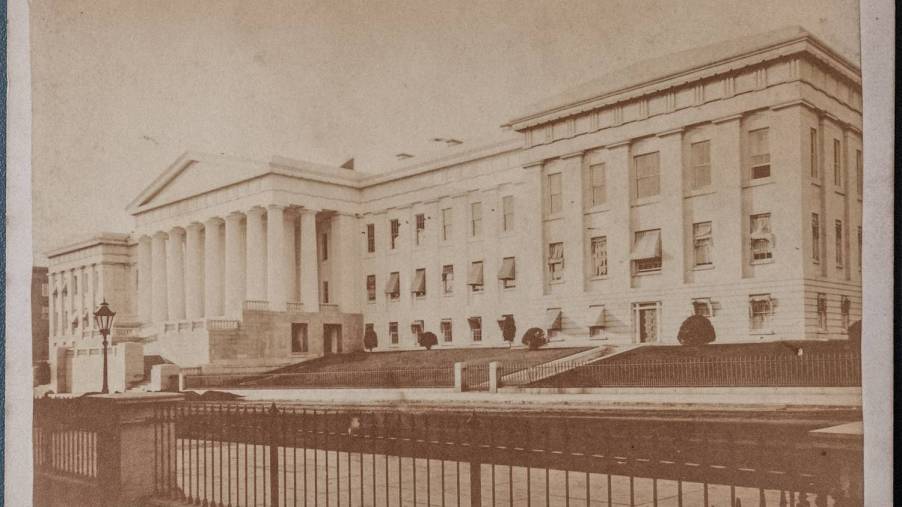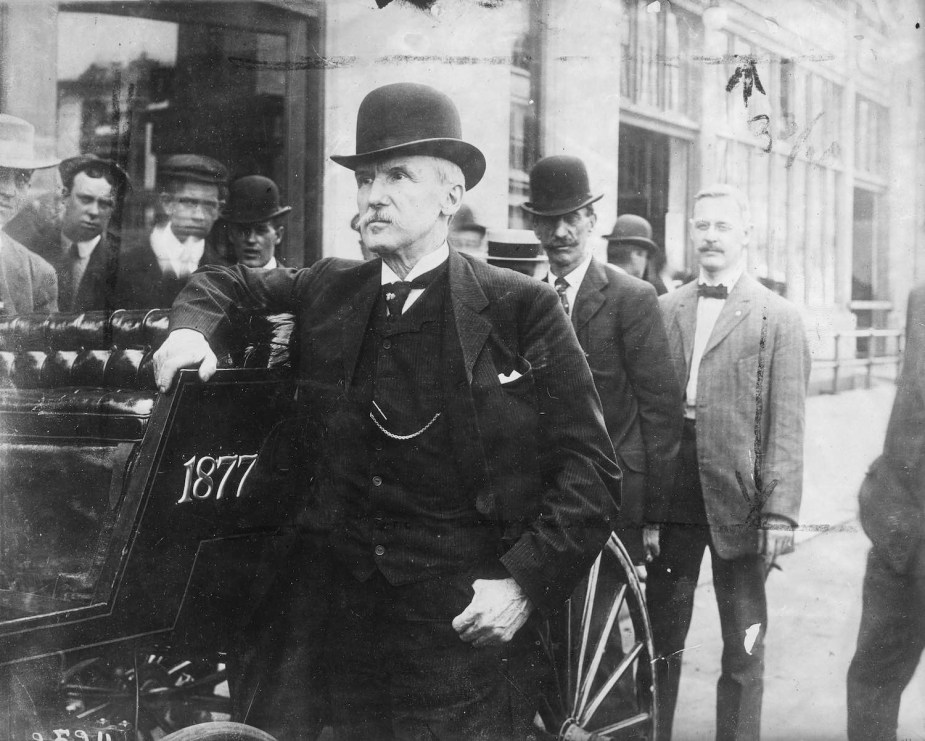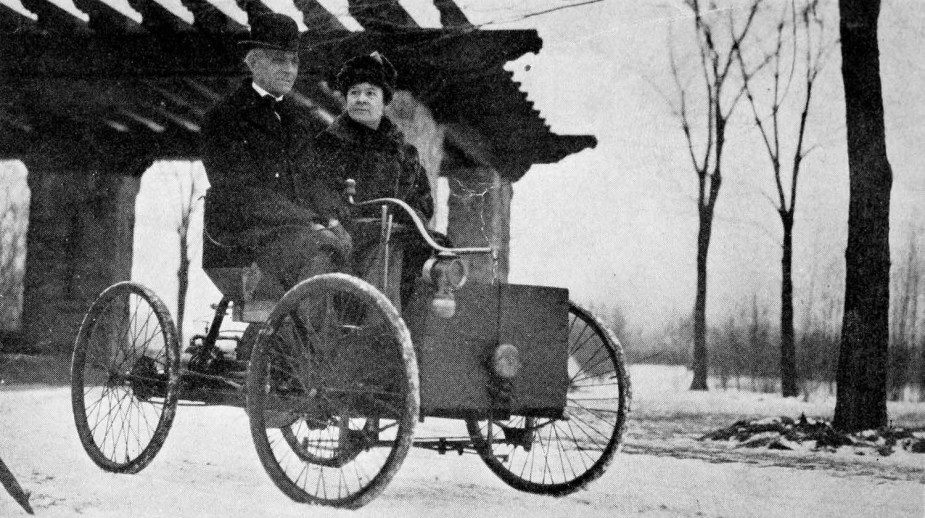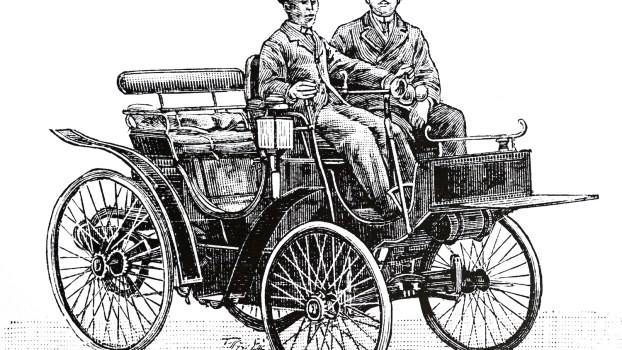
Patent Troll: Meet the Lawyer Who Trademarked the Concept of the Automobile, Shook Down Countless Automakers for Thousands, and Made a Lifelong Enemy of Henry Ford
Henry Ford had two failed automotive startups before Ford Motor Co. finally succeeded. On a triumphant night in 1903 he stood in his factory’s rail yard to watch his first cars loaded onto a train. Then a courier appeared across the tracks: A New York lawyer named George B. Selden had patented the idea of the automobile in the 1870s. Now he demanded Ford give him a cut of his hard-earned profits or shut down his illegal business.
The birth of a patent troll

The U.S. Patent Office guarantees that if an ingenious inventor builds something brand new, a predatory entrepreneur can’t just buy one, reverse engineer it, and sell it. But obviously enforcing this can be problematic: Could you patent rubber tires? If someone patents solid rubber tires, should air-filled tires be a completely different patent? What about nitrogen-filled tires?
“Patent troll” is a modern term for someone who, like a dotcom millionaire, patents things they have not invented. They are hoping for a payout from some future business. But in George Selden’s defense, he really did try to invent an automobile.
During the 1870s, the Rochester-based lawyer was intrigued by the idea of a horseless carriage powered by an internal combustion engine. He experimented with a primitive twos-stroke engine but could never make it work.
A quick automobile timeline: the first automobile with a steam engine was a massive three-wheeled truck built in France in 1769. The first internal combustion version ran on flammable powders and was built in Switzerland in 1807. By 1832, inventors were selling primitive electric automobiles. Many inventors knew that gasoline would make an excellent fuel source, but it was the invention of the carburetor that finally allowed Karl Benz to build the first gas-powered engine in 1878 (patented in 1879). He slapped the thing on a three-wheeled buggy and patented the first gas-powered automobile in Europe in 1886.
So Selden wasn’t alone in experimenting with a gasoline-powered internal combustion engine in the 1870s. What made him unique was that he drew up a vague patent for such an engine on a horseless carriage, and sent it in to the U.S. Patent Office in 1879. The lawyer knew the maximum time he could “edit” his patent before finalizing it was 17 years. Once it was granted, it would only last for 17 years. So he spent the next 16 years occasionally filing to change an “and” or “the” and waiting for someone to actually invent an automobile.
At the last possible moment, Selden finalized his filing. November 5th, 1895, he was granted U.S. patent No. 549,160 for the idea of the gas-powered automobile. The only problem was that he was too broke to sue any of the startups already experimenting with early automobiles.
William Whitney was from a wealthy old family, had served Grover Cleveland in DC, and by the 1890s was toying with the idea of investing in a car company. But building cars is hard work. And when Whitney realized some lawyer had patented the automobile, dollar signs gleamed in his eyes. In 1899 he made an offer Selden couldn’t refuse: $10,000 and 5% of any patent royalties they could collect. That’s about $380k today (Forbes).
Whitney’s lawyers went after the entrepreneurs who were trying to get the first automobile companies off the ground. One by one, these companies caved to his demands. The largest company at the time was the Winton Motor Carriage Company out of Cleveland, Ohio. Alexander Winton fought Selden and Whitney for two years, until the legal fees nearly bankrupted him. Then he joined the growing coalition that was Whitney’s “Association of Licensed Automobile Makers.”
Every one of these automakers paid Whitney well for every vehicle it made. They also had to install a three inch brass plaque with the Association’s logo–the outline of the imaginary car Selden had patented in 1879–so Whitney’s agents could see the vehicle was in compliance.
ALAM intimidated consumers, advertising that buying a cheaper, unlicensed car meant you were buying a lawsuit. And they hunted buyers down. It was so harrowing buying an unlicensed car in their home turf of New York, that one Manhattanite asked his unlicensed car dealer to tell the ALAM men that he had moved to Texas and then died there. Did it work? No, they kept after him and tracked him down in a hotel bar in Albany.
The $700 million Association of Licensed Automobile Makers vs. Henry Ford

Henry Ford’s response to ALAM was swift and curt. He promised that Ford Motor Co would protect buyers from the ALAM: “We possess just enough of that instinct of American freedom…to cause us to rebel against oppression or unfair competition.” Henry Ford would not pay Whitney any “graft money.”
The public ate it up. The lawsuit transformed Henry Ford into a household name: the lone entrepreneur standing up to a $700 million consortium that included nearly every other automaker.
Ford claimed that Selden had waited too long to finalize his patent. The case finally landed in court in 1909. The Judge, Charles Merrill Hough, concluded, “Unless Selden did something unlawful during his sixteen years’ wrangle with [Patent] Examiners . . . he is within the law, and his rights are the same of those as the promptest applicant.”
Most entrepreneurs would have quietly joined the ALAM. General Motors founder William Durant had already caved. But Henry Ford had worked too hard to give up his sovereign company in 1909. He announced, “We will fight to the finish.”
The public was very much on Ford’s side. In the 1870s, the concept of a gasoline-powered internal combustion engine was novel. The idea of using one to power an automobile seemed enough of an innovation to be patentable. But by the patent date in 1895–and certainly by the 1911 trial appeal–most buyers and judges understood there was too much nuance between various gas-powered automobiles for one patent to cover them all.
Judge Walter Chadwick Noyes presided over Ford’s 1911 appeal. He agreed, “Every element in the [Selden] claim was old and the combination itself was not new.” By this he meant that any old gasoline engine powering a horseless carriage was not a new enough innovation in 1895 to be patentable. So Ford’s lawyers picked through the vague patent, searching for some specific detail that no longer applied. And they found it. Though Selden had written his description of an automobile with a gas engine to be as vague and future-proof as possible, he had referred to the internal combustion engine as a two-stroke.
Motorheads know that while primitive two-stroke engines are simple and pack a lot of power for their size, almost every modern vehicle is a four-stroke. This simply means that each spark plug fires on every other piston cycle, giving each cylinder a full cycle to clean out exhaust gases. Why? Four-stroke engines are more efficient and pollute less. This innovation was in its infancy when Selden was filing his patent, so he didn’t think to include it. And the difference was enough for Noyes to judge in favor of Henry Ford.
Without a patent to back up Whitney’s claim, the ALAM fell apart instantly. Henry Ford no longer could undercut his ALAM competitors’ price. But the image of the lone entrepreneur standing up to greedy old money was burned into the popular culture of the U.S. By 1914, nine out of every 10 cars on the planet was a Ford.
Next, meet another enemy of Henry Ford’s, the Vermont-born engineer who founded both Lincoln and Cadillac, or learn more about Ford’s battle with Selden in the video below:




